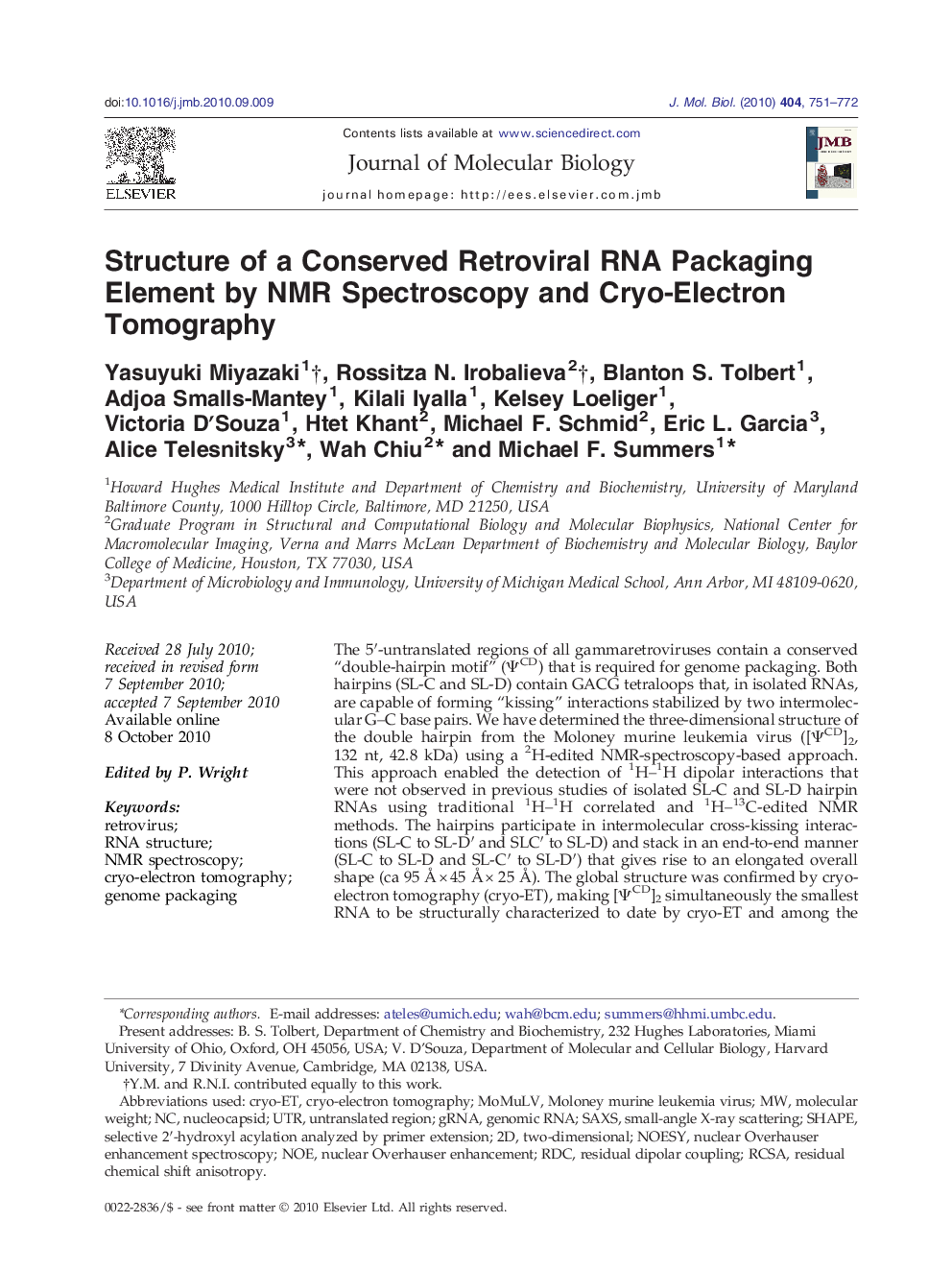| کد مقاله | کد نشریه | سال انتشار | مقاله انگلیسی | نسخه تمام متن |
|---|---|---|---|---|
| 2185399 | 1095978 | 2010 | 22 صفحه PDF | دانلود رایگان |

The 5′-untranslated regions of all gammaretroviruses contain a conserved “double-hairpin motif” (ΨCD) that is required for genome packaging. Both hairpins (SL-C and SL-D) contain GACG tetraloops that, in isolated RNAs, are capable of forming “kissing” interactions stabilized by two intermolecular G–C base pairs. We have determined the three-dimensional structure of the double hairpin from the Moloney murine leukemia virus ([ΨCD]2, 132 nt, 42.8 kDa) using a 2H-edited NMR-spectroscopy-based approach. This approach enabled the detection of 1H–1H dipolar interactions that were not observed in previous studies of isolated SL-C and SL-D hairpin RNAs using traditional 1H–1H correlated and 1H–13C-edited NMR methods. The hairpins participate in intermolecular cross-kissing interactions (SL-C to SL-D′ and SLC′ to SL-D) and stack in an end-to-end manner (SL-C to SL-D and SL-C′ to SL-D′) that gives rise to an elongated overall shape (ca 95 Å × 45 Å × 25 Å). The global structure was confirmed by cryo-electron tomography (cryo-ET), making [ΨCD]2 simultaneously the smallest RNA to be structurally characterized to date by cryo-ET and among the largest to be determined by NMR. Our findings suggest that, in addition to promoting dimerization, [ΨCD]2 functions as a scaffold that helps initiate virus assembly by exposing a cluster of conserved UCUG elements for binding to the cognate nucleocapsid domains of assembling viral Gag proteins.
Graphical AbstractFigure optionsDownload high-quality image (137 K)Download as PowerPoint slideResearch Highlights
► Three-dimensional structure determined for 132 nt RNA involved in retroviral genome packaging.
► Solved by a novel 2H-labeled NMR and cryo-ET approach.
► Simultaneously, the largest NMR structure, smallest cryo-ET structure solved to date.
► Prior models based on chemical probing incompatible with the structure.
► Structure likely functions as a scaffold that exposes protein binding sites.
Journal: Journal of Molecular Biology - Volume 404, Issue 5, 17 December 2010, Pages 751–772